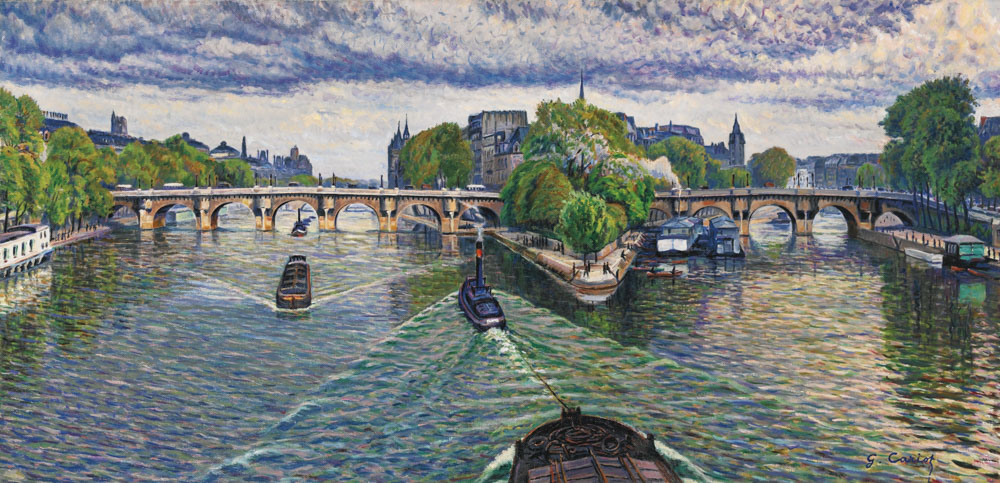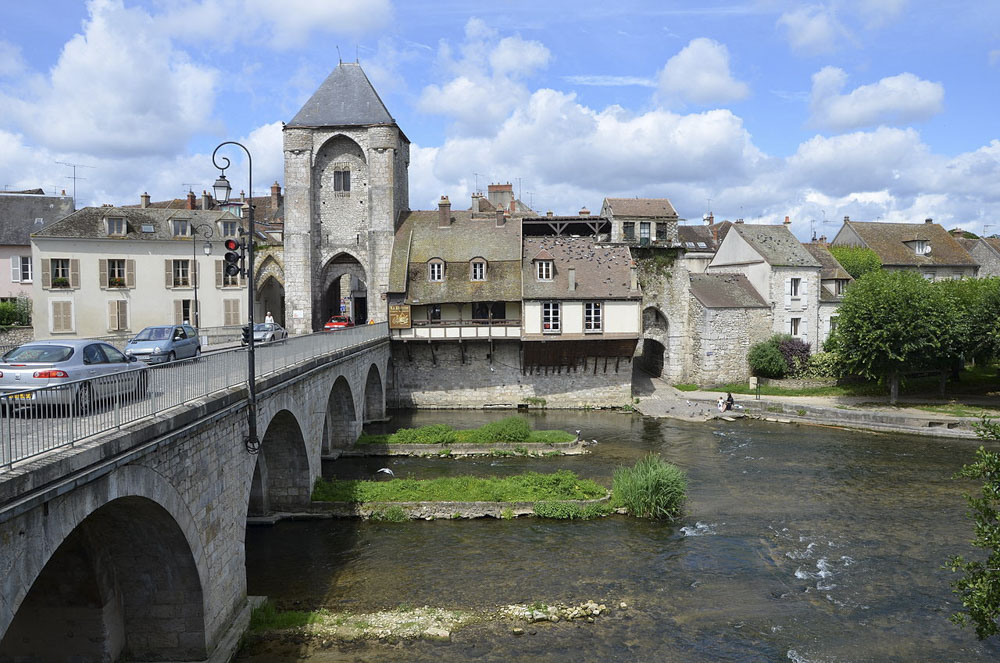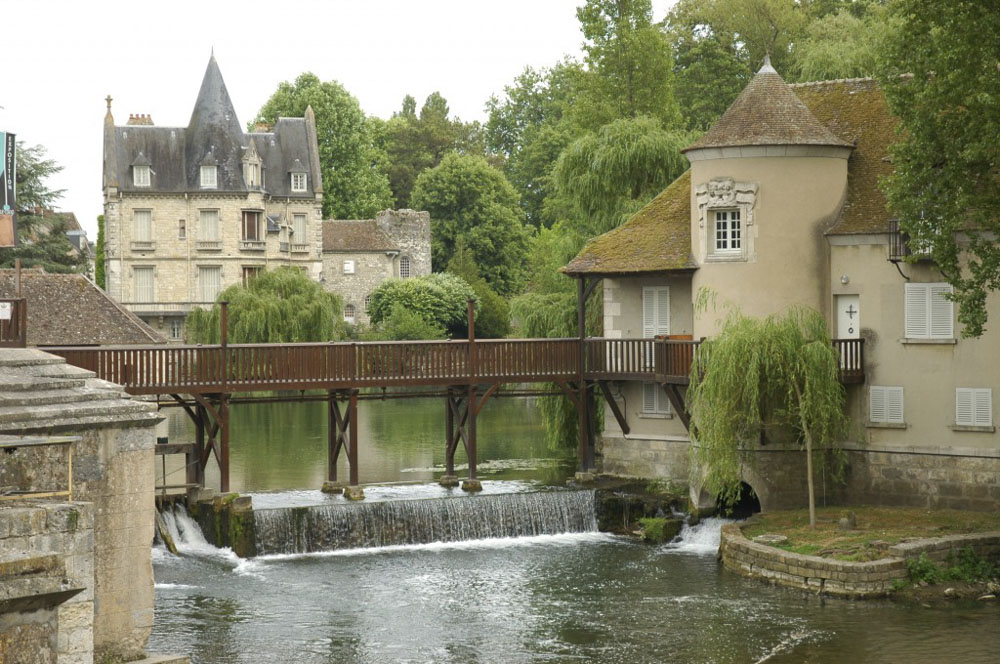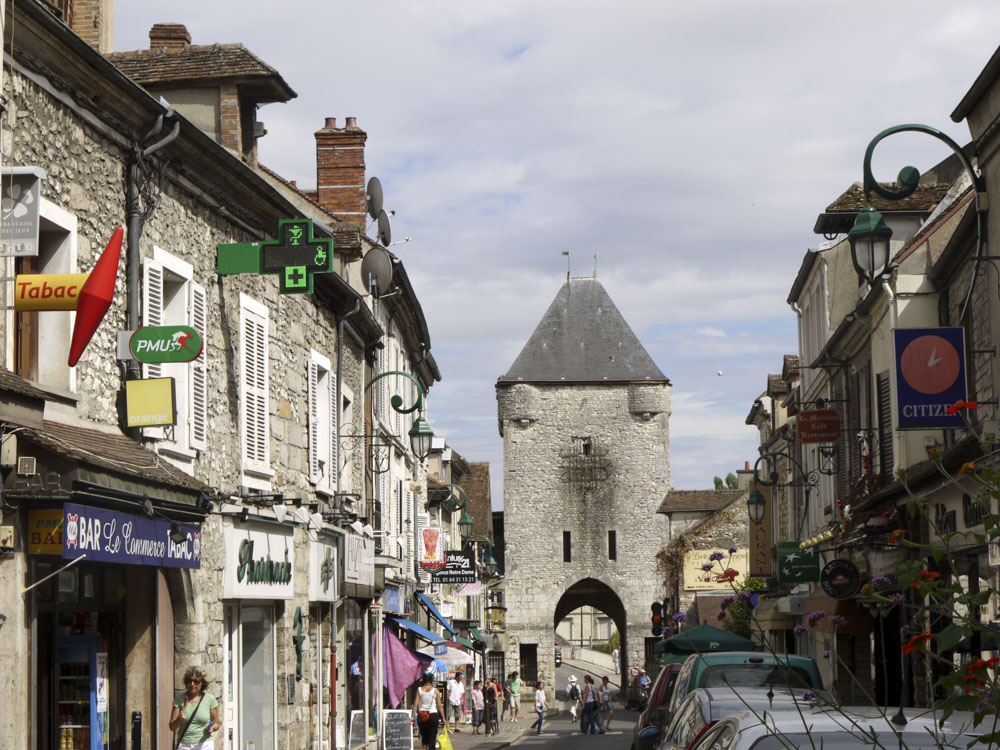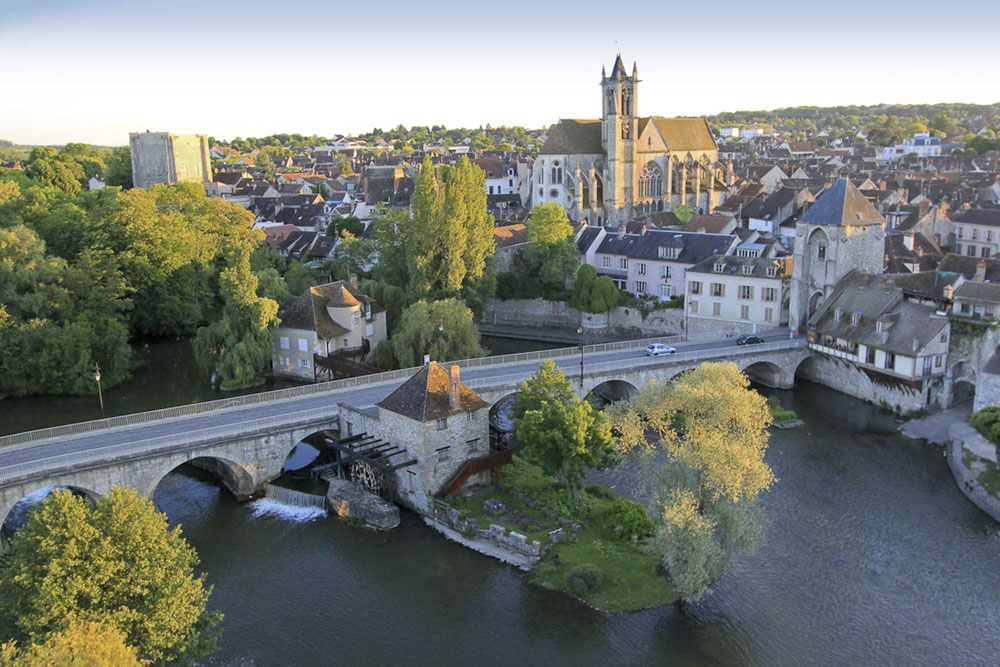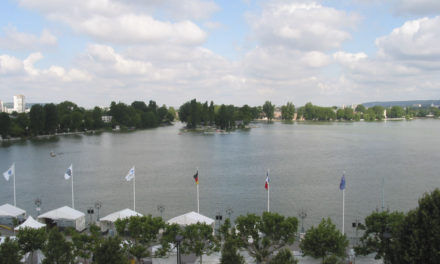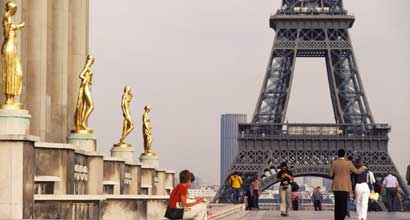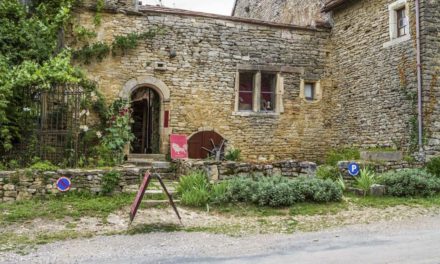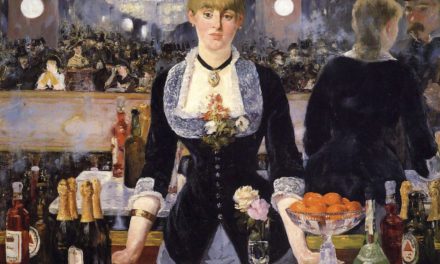The picturesque medieval town of Moret -sur-Loing, established in the Gallo Roman era as a useful point between Paris and Sens, was visited by many kings, amongst them Philippe Auguste and Saint Louis in the 13th century and subsequently Francois 1ere in the 16th and Henry IV in the 17th centuries. The two impressive fortified gateways date from this period and, along with its walls and twenty towers, they are a relic of its role to defend the Kingdom of France from the supporters of the Dukes of Burgundy.
Book a Hotel in Moret-sur-Loing
History
With a bust to commemorate him in the Place de Samois, Alfred Sisley became one of Moret’s most famous sons. Born in Paris in 1839 to English parents, he arrived in Moret in 1889 and ended his days there in 1899, dying of cancer in poverty and pain. His wife predeceased him. Enraptured by the river landscapes, the medieval town and its surroundings, this famous impressionist artist painted over 400 scenes but sadly, it was only after his death that he became famous for his work and his struggle to live from the proceeds of his paintings was a hard and non productive road. Now they are to be seen in all the great museums and he is recognised as one of the masters of impressionism.
Architecture
The beautiful church of Notre-Dame which towers above the town was consecrated by Thomas Becket. Built between the 12th and 15th century with all the beauty and splendour of the gothic cathedrals, it is well worth a visit. Of equal note is the renaissance façade in the courtyard of the town hall said to date from the time of Francois 1er and with its many medallions and sculptures typical of that period and style. The single main street of Moret is a plethora of colourful shops and half timbered buildings, with a fortified gateway at either end. The Office De Tourism is just at the entrance to the town in the Place de Samois. Tel: 01 60 70 41 66.
Festivals
Moret is in a privileged position on the edge of the forest of Fontainebleau and the banks of the River Loing. Every Saturday night from mid June to the end of September there is a Son et Lumière festival which will evoke the atmosphere and happenings of bygone days. Additional attractions are the Conservatoire du Vélo (or the bicycle academy) exhibiting a variety of models used by our ancestors. The Musée du Sucre d’Orge des Religieuses is a museum where the nuns made barley sugar. This is in the Rue du Puits du Four. Tel: 01 60 70 35 63. Or you can simply take a boat ride along the Loing and recapture the scenes which appeared on the palettes of so many impressionist painters.
Copyright text : Sarah Francis.

